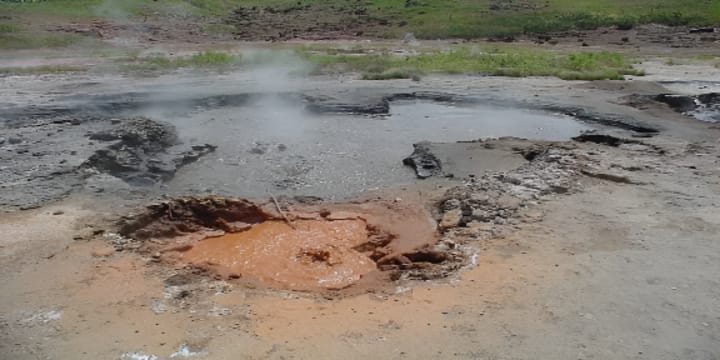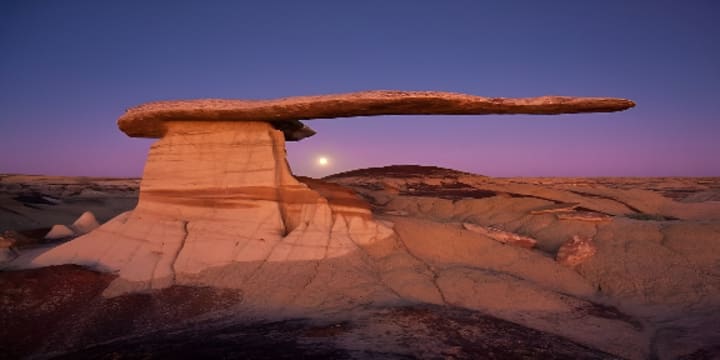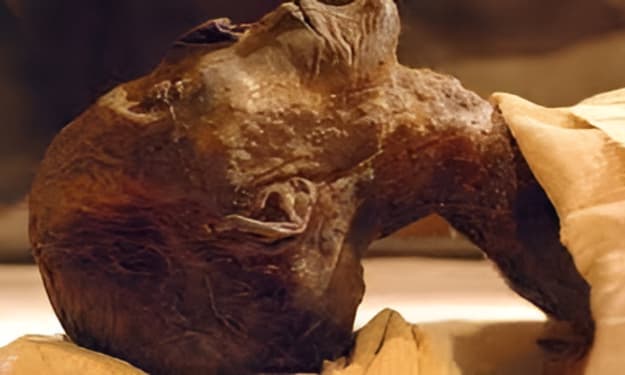
From frozen tundras with icy landscapes to towering geological structures, our world showcases a wealth of stunning geological wonders. However, there exist certain terrains that defy conventional notions of Earthly landscapes and seem nearly alien. Continue reading part 2 of ‘Are These Geological Formations Real?’ to learn about these bewildering geological marvels. This list begins with number 10.
Number Ten: The Boiling Mud Pools of San Jacinto

A hidden treasure within the realm of San Jacinto, the boiling mud pools of this region present an astonishing geological curiosity that demands firsthand witness to grasp its authenticity. However, one should exercise caution, for the name itself hints at the perilous nature of these pools, also referred to as "Los hervedaros." These small pools of superheated mud exhibit vigorous boiling, sending columns of steam skyward. The local community has thoughtfully laid out pathways marked by stones and has provided informative boards, maintaining the preservation of this natural spectacle while ensuring visitor safety from a respectable distance.
Beyond the scorching mud's presence, these pools stand in stark contrast to their surroundings. Amidst a lush green setting teeming with life, these raw, brown products of volcanic activity emerge. The vibrant green foliage embraces the untamed energy beneath the Earth's surface, resulting in an intriguing harmony between the forces of nature. What sets these mud pools apart is their extraordinary temperature; boiling at blazing degrees, often surpassing 200 degrees Fahrenheit, they epitomize the unprocessed power of geothermal forces. This incredible heat serves as evidence of the molten energy simmering just beneath the Earth's crust, providing a mere glimpse into the extraordinary forces that sculpt our world. However, one must remember the cautionary note: approaching these mud pools unwisely is an invitation to disaster, as a plunge into the seething mud could lead to severe burns and injuries. Picture the challenge not only of extricating oneself from the thick mud but also the ordeal of cleansing it off – nature's version of napalm.
The steaming mud pools present a captivating sight from a safe distance. These bubbling, gurgling, and burping pools are the result of a delicate interplay between geological factors, primarily involving volcanic and geothermal activities. Underground water, heated by nearby magma chambers, transforms into superheated steam, melding with surrounding minerals and sediments to create the mesmerizing boiling mud pools that we marvel at today. This intricate dance of the Earth's elements has unfolded over millennia and continues to evolve.
Number Nine: Jade Coast

For centuries, the city of Itoigawa in Niigata Prefecture has held a reputation for its exceptional jade. It stands as one of the oldest jade-producing regions globally, its connection to jade dating back to the prehistoric Jomon period, long preceding the Ormec and Mayan cultures. Even in modern times, Itoigawa remains a significant locale in Japan for discovering jade. This is attributed to the city's geological positioning, where the Fossa Magna and the Itoigawa-Shizuoka tectonic line converge. An array of minerals formed between 20 to 500 million years ago, originating primarily from the eastern mountain ranges and carried by rivers like the Himekawa. These stones often found their way to the Edoigawa coastline, smoothed by the currents, and famously referred to as the Jade Coast or "Hisui Kaigan" in Japanese. While collecting jade in the Kotakigawa Jade Gorge is restricted, until the late 20th century, gathering jade was permitted on the Jade Coast. Previously, an abundance of jade pebbles could be found on these beaches, leading locals to select only the highest quality specimens and returning the rest to the sea. While the quantity has diminished today, diligent searchers may still discover a handful of jade pebbles. In 1994, the Fossa Magna Museum was established near one of the beaches, showcasing various specimens from Itoigawa, including raw jadeite from the Jade Coast. The museum also offers a service to identify and authenticate minerals found on the Jade Coast, making it an excellent resource for determining whether your jade is jadeite or nephrite.
Number Eight: Namafyak Geothermal Area

Typically, desert landscapes exude a quiet ambiance, with occasional sights like rolling tumbleweeds and stoic cacti basking in the sun. However, in northeastern Iceland, an extraordinary site challenges these norms. The Namafyak geothermal area stands as a peculiar fusion of an otherworldly terrain and a scene reminiscent of Dante's Inferno. Nestled at the base of a towering volcanic mountain, this location features an intriguing assortment of boiling mud pots and steaming springs known as fumarols—openings in the earth emitting sulfurous gases. As one approaches the site, the surroundings might be mistaken for an Arizona desert, but upon closer inspection, the familiarity fades. The landscape seems to split apart, steaming like a simmering kettle. However, the emissions from these fumarols and mud pots are not water but rather noxious fumes, imparting a distinctive rotten egg odor. These fumes have eradicated all vegetation and deterred some sensitive-nosed tourists, rendering the area nearly as barren as Mars. Yet, for those willing to tolerate the scent, a remarkable landscape unfolds. Vibrantly colored mineral deposits adorn the ground, infusing the dirt with a liveliness that rivals even the most striking lichens and mosses. Amid the fumarols and mud pots, the Namafyak geothermal area offers a surreal experience that diverges from any other.
Number Seven: Ashi Slepa Wilderness Study Area

Nestled within the arid expanse of the San Juan Basin in Northwest New Mexico lies a hidden wonder that seems to transport visitors to another realm—the Ashi Slepa Wilderness Study Area. Encompassing 6,500 acres of land managed by the Bureau of Land Management, this remarkable landscape boasts weathered rock formations that appear almost otherworldly. As you explore this extraordinary terrain, you'll be captivated by the subdued colors and striking geology. Mushroom-shaped hoodoos rise like colossal alien trees, casting an air of mystery over the rocky landscape. Scattered throughout the Badlands are petrified tree stumps and ancient bones, remnants of long-gone inhabitants and a testament to the area's rich history. Geologically, this wilderness study area acts as a time capsule, dating back 75 million years to the late Cretaceous Period. Its composition includes layers of sandstone, shale, mudstone, and bituminous coal—a diverse tapestry of ancient sedimentary history. Over an immense span of 75,000 millennia, the forces of nature have sculpted and eroded these layers, resulting in a visually stunning and fossil-rich environment. The site contains fossils of prehistoric crocodiles, turtles, fish, and even dinosaurs—offering a glimpse into a prehistoric graveyard that sparks the imagination. Amid the rock formations, petrified wood, including upright tree stumps with roots, stands as ancient witnesses to the passage of time. This living museum of natural history strictly safeguards its fossils, ensuring the preservation of this exceptional site. Though reaching this area may require some effort, the unparalleled rewards make the journey well worthwhile. Exploring this serene and dreamlike environment is made easier by the generally flat terrain and the accessibility of its most picturesque features within a short distance of the parking area.
Number Six: Stromatolites of Hamelin Pool

Nestled within a sheltered bay along the coast of Western Australia, Hamlin Pool initially appears as a moderately interesting rock-strewn beach. The peculiar rocks dotting the area might invoke thoughts of lava flows or arcane tectonic processes. However, these formations are not rocks; they are active colonies of one of Earth's earliest life forms. These curious rock-like objects, abundant in Hamlin Pool, are known as stromatolites. Comprised of single-celled organisms called cyanobacteria, stromatolites serve as a remarkable testament to ancient life. Cyanobacteria, previously referred to as blue-green algae, emerged around 3.5 billion years ago—long before the existence of complex life forms. These organisms are the oldest type of photosynthetic life on Earth, predating even plants by billions of years. These cyanobacteria played a vital role in Earth's history by providing the atmosphere with much of the oxygen required to support subsequent life forms. Stromatolites form through a process involving sediment trapped in the sticky mucosal secretions of cyanobacteria, which then harden with calcium carbonate produced by these microorganisms. With colonies comprising millions of bacteria, stromatolites grow gradually, at a rate of about half a millimeter per year. While stromatolite fossils, some dating back 3.5 billion years, have been discovered worldwide, the stromatolites of Hamlin Pool represent some of the only living specimens found today. These living stromatolites thrive due to the hyper-saline water of Hamlin Pool, which boasts twice the salinity of regular seawater. Clear shallow waters and a built-in boardwalk offer an excellent opportunity for visitors to observe these ancient formations without disturbing their habitat. Nearby, the Hamlin Pool Telegraph Station includes an aquarium housing the only living stromatolite in captivity, further enhancing the experience for those intrigued by Earth's ancient past.
About the Creator
iCi BuZz
Bleed on paper.
Upload the creative juices.
Replicate my inner self on blogs.
Sounds like you?
Welcome to my inky fraternity.
Yours truly,
iCi BuZz





Comments
iCi BuZz is not accepting comments at the moment
Want to show your support? Become a pledged subscriber or send them a one-off tip.